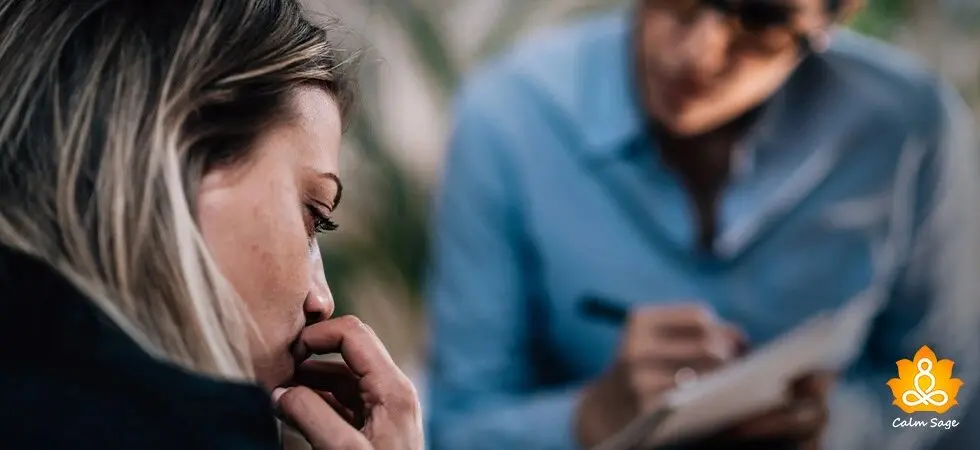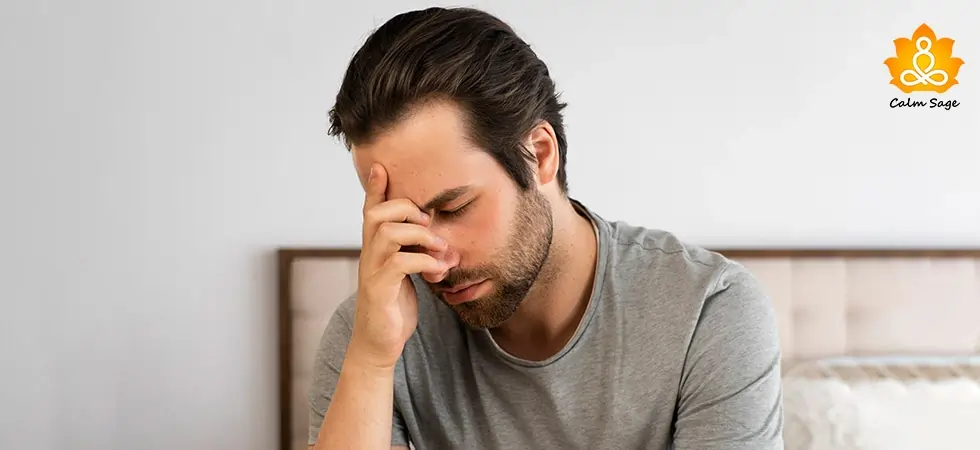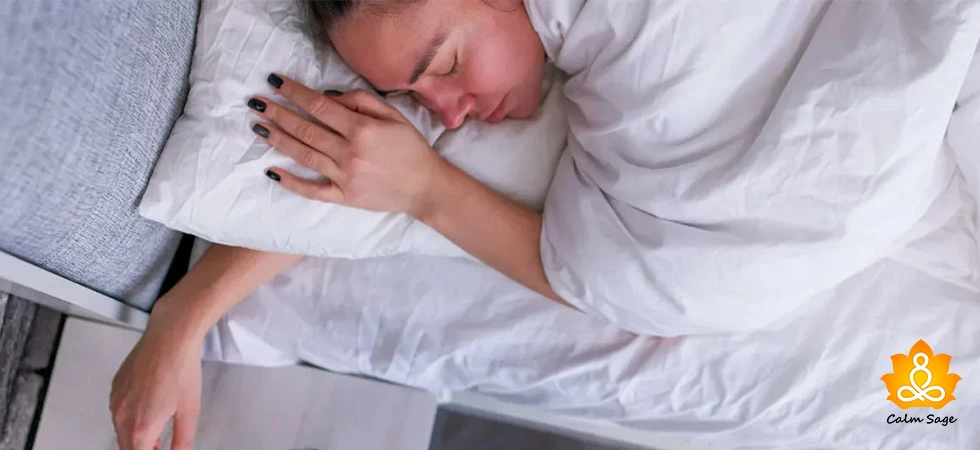CBT For OCD Mini-Guide: How It Works, Techniques, And More

Obsessive-compulsive disorder or better known as OCD is a serious mental health condition that can be characterized by persistent, intrusive, and unwanted thoughts – obsessions – and repetitive actions – compulsions. CBT or cognitive-behavioral therapy is one of the most recommended treatment approaches for OCD among other conditions. This therapy approach offers you strategies to manage their symptoms.
In this article, we’re talking about how CBT for OCD works, what techniques can be used to treat OCD, can it be effective in treating OCD symptoms, and how you can begin your recovery.
How Does CBT for OCD Work?
CBT for OCD mainly works with two elements. One of them is cognitive therapy and the other one is behavioral therapy. The cognitive part of CBT focuses on identifying and reframing negative thoughts while the behavioral part of CBT works on changing the behavior or preventing the compulsions that come with the disorder. One of the techniques used is CBT for OCD is exposure and response prevention therapy.
Cognitive there helps you recognize and reframe irrational and negative thoughts that trigger your obsessions. With time, you learn to identify cognitive distortions and challenge them to reduce the anxiety related to your obsessions.
Behavioral therapy, especially exposure therapy, works on exposing you to the source of your anxiety and prevents you from engaging in the compulsions that accompany the obsessions. This process can, more or less, help you desensitize to your triggers and reduce the compulsive behaviors over time.
Cognitive behavioral therapy for OCD uses different steps, namely:
- Psychoeducation
- Cognitive restructuring
- Exposure and response prevention (ERP)
- Relapse prevention
Now, let’s take a look at the CBT techniques that can be used to treat obsessive compulsive disorder.
CBT Techniques For OCD
1. Recording Your Thoughts
Recording your thoughts and feelings can help you keep track of your cognitive distortions, negative thoughts, and irrational beliefs. Writing them down can help you make sense of them and examine evidence that goes against them. With this kind of journaling, you can learn to develop a more balanced thinking.
2. Inference-Based CBT
Inference-Based CBT or I-CBT is an approach created for OCD treatment. With this technique, you can understand the connection between obsessive thoughts and false reasoning. I-CBT assumes that it is false reasoning that causes OCD. So naturally, this technique states that correcting false thinking will change the outcome of OCD symphony.
3. Cognitive Restructuring
Cognitive restructuring is another CBT technique to treat OCD symptoms. This technique involves identifying and challenging cognitive distortions that accompany OCD. You learn to reframe your thoughts more realistically, which can help reduce obsessive thinking and anxiety.
4. Exposure And Response Prevention (ERP)
ERP is one of the most recommended treatment approaches for OCD. This technique involves gradual exposure to fearful situations while actively preventing compulsive behaviors. This can help you build tolerance for anxiety and reduce the need to engage in compulsions.
5. Mindfulness-Based Techniques
Mindfulness techniques can also be used to treat obsessive compulsive disorder. These techniques teach you to observe your thoughts and feelings without judgment and accept them as they come. This can reduce the power of negative thoughts, obsessions, and compulsions.
6. Imaginal Exposure
Another CBT technique for OCD can be imaginary exposure. This technique involves confronting your intrusive thoughts through the art of visualization. This technique can be useful in situations where obsessions are not that easy to confront in real time situations.
7. Cognitive Defusion
Cognitive defusion is a technique that helps you detach from your thoughts and view them as mental events instead of actual truths. This CBT technique can reduce the intensity of your obsessions and compulsions.
8. Progressive Muscle Relaxation (PMR)
Progressive muscle relaxation is a relaxation technique that urges you to intentionally tighten and relax your muscles, physically. When you feel stressed or anxious, your body activates the flight-and-fight response, leading you to feel physically tense. PMR can help you reduce stress and soothe your anxieties.
9. Graded Exposure
Another CBT technique for OCD is graded exposure. This technique involves creating a hierarchy of sorts for anxious situations and gradually facing them. Herein, you get to rate situations from least anxiety-provoking to the most challenging one.
10. Self-Monitoring Symptoms
Self-monitoring involves tracking obsessions and compulsions to get a more in-depth insight into your triggers and patterns. The knowledge from self-monitoring symptoms can help you and your therapist to create a more effective treatment plan for managing your OCD symptoms.
CBT for OCD: Examples
For Fear of Contamination
If you have the fear of contamination, then cognitive restructuring can be used to treat it. For example, you believe that touching objects will make you sick, so you engage in cognitive restructuring to challenge this thought. You gradually touch various objects without washing your hands, starting with least anxiety-inducing objects to more, as time passes.
For Harm-OCD or Harm Compulsion
If you have Harm OCD, the imaginal exposure can be recommended. For example, you fear that you might accidentally harm someone and avoid sharp objects. Imaginal exposure can work by helping you visualize scenarios where you use sharp objects without hurting anyone. You can start by imagining safe objects and then moving to more challenging ones.
Does CBT for OCD Help?
Research shows that CBT, especially exposure and response prevention, can be highly effective in treating OCD. More studies have found that approximately 60-70% of people experience an improvement in symptoms of OCD with CBT techniques. CBT’s effectiveness comes from its ability to address cognitive and behavioral elements of OCD.
Moreover, CBT offers long-term benefits as you learn skills to manage your symptoms, independently. This can lead to a reduction in OCD relapse.
While medications can be prescribed for OCD treatment and can be effective too, CBT offers medication-free options with less side effects. In some cases, CBT and medications can be combined for an effective treatment.
Using CBT to Treat OCD…
CBT requires you to be an active participant in the treatment process, so make sure you communicate with your therapist throughout the treatment and the recovery process. Don’t hold back your thoughts and feelings as the little things can make your progress feel worthy as well as increase the effectiveness of your treatment.
Whatever CBT exercises are given to you by your therapist, make sure you practice them. Engaging in CBT exercises – in therapy and out of session – is important for your progress. Keep in mind that CBT is a slow process and recovery might take time. Learn to be patient with yourself and keep working on your techniques.
You can also keep a support system of friends and family near you to offer encouragement. Sharing your progress with loved ones can also help you reduce feelings of loneliness.
Finding a CBT Therapist…
Here are some ways you can find a CBT therapist to help with OCD symptoms:
- Ask around: Ask your loved ones for recommendations if you can. You can also go to healthcare websites and look through the directory for good CBT therapists who specialize in treating OCD.
- Check their credentials: Before saying yes to the therapist, make sure they have training in OCD treatment.
- Try online therapy: Online therapy can be a convenient and accessible option, especially when you have limited access to local therapists. Many therapists and platforms offer online therapy, so don’t limit your options.
- Check insurance: Make sure to check if the therapist accepts insurance and if the cost of the therapy is in your budget. Some therapists also offer sliding scale fees based on your financial situation
How to Practice CBT for OCD by Yourself?
While it’s recommended to work with a professional therapist in treating OCD, there are some at-home CBT exercises you can practice in the meantime:
1. Deep breathing exercises:
Deep breathing exercises can help you reduce anxiety that accompany OCD symptoms. All you need to do is take a few deep breaths, hold, and release.
2. Grounding exercises:
You can also practice grounding exercises to stay in the present. You can try the five senses exercises – the 5-4-3-2-1 grounding technique or other mindfulness techniques to calm your nerves and reduce intrusive thoughts.
3. CBT apps:
You can download CBT apps from Google Play Store or Apple App Store to aid your therapy. Apps such as Happify and Wysa can help you track and cope with OCD symptoms when you’re between sessions.
4. Positive affirmations:
Positive affirmations can also help you counter negative thoughts and self-beliefs. You can create your own affirmations or find positive affirmations online and repeat them to feel confident.
5. Join support groups:
Joining support groups can help you cope with OCD. Sharing your experience with others can help you feel validated and learn from others. It can also help you feel less alone in your struggles.
Wrapping Up…
CBT is a powerful evidence-based treatment approach that offers you the tools you need to manage your OCD symptoms and improve your overall well-being. By understanding how CBT works, its techniques to treat OCD, and learning how to use CBT at home, you can reduce your symptoms.
Whether it’s working with a therapist or practicing at-home, the components of CBT as an approach can give you the motivation to take control of your disorder and live a fulfilling and healthy life,
I hope you can use the tools mentioned in this article to reclaim your life from the grip of OCD and improve your well-being. Were we able to help you? Let us know your thoughts and comments in the section below.
Take Care!




















